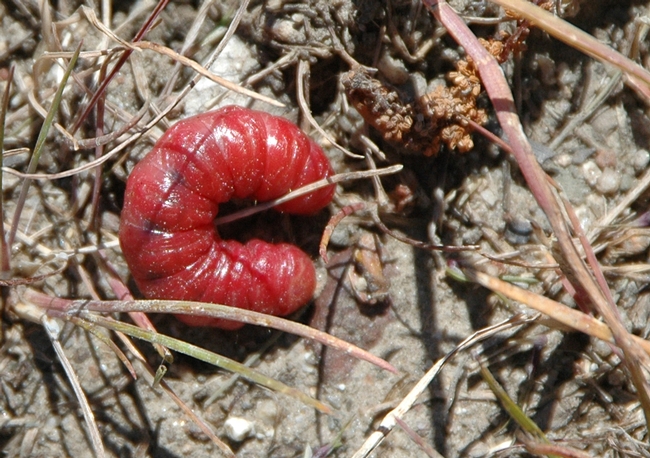What's that?
When award-winning photographer Teresa Willis of Vacaville encountered a red caterpillar on a dirt road at about 6000 feet in a canyon north of Paradise Valley, Nev., she did what photographers do--she captured an image of it.
And posted it on her Facebook page where some of her friends likened it to the Oscar Mayer weiner.
The caterpillar is indeed red. Bright red. Well, what is it?
Renowned butterfly expert Art Shapiro of UC Davis, who knows about such things, says it is the larvae of an owlet moth (family Noctuidae) "and the species is probably Noctuid."
"It's infested with the parasitic nematode Heterorhabditis bacteriophora, a generalist parasite of insect larvae, which it turns bright red," Shapiro says. "Experiments have shown that this acts as a warning color, deterring visual predators (such as birds) from eating them (and the nematodes in the process)."
Hardly any Lepidoptera escapes identification from Art Shapiro, who maintains the popular website, Art's Butterfly World at http://butterfly.ucdavis.edu/ and is a UC Davis professor of evolution and ecology.
As for Teresa Willis (see more of her work at http://www.redbubble.com/people/teresalynwillis), you can say she got the red out.
With the help of a parasitic nematode, Heterorhabditis bacteriophora.
Attached Images:

Larvae of an owlet moth turned bright red by the parasitic nematode Heterorhabditis bacteriophora. (Photo by Teresa Willis)

Red caterpillar on the move--but it probably won't be eaten by birds. (Photo by Teresa Willis)